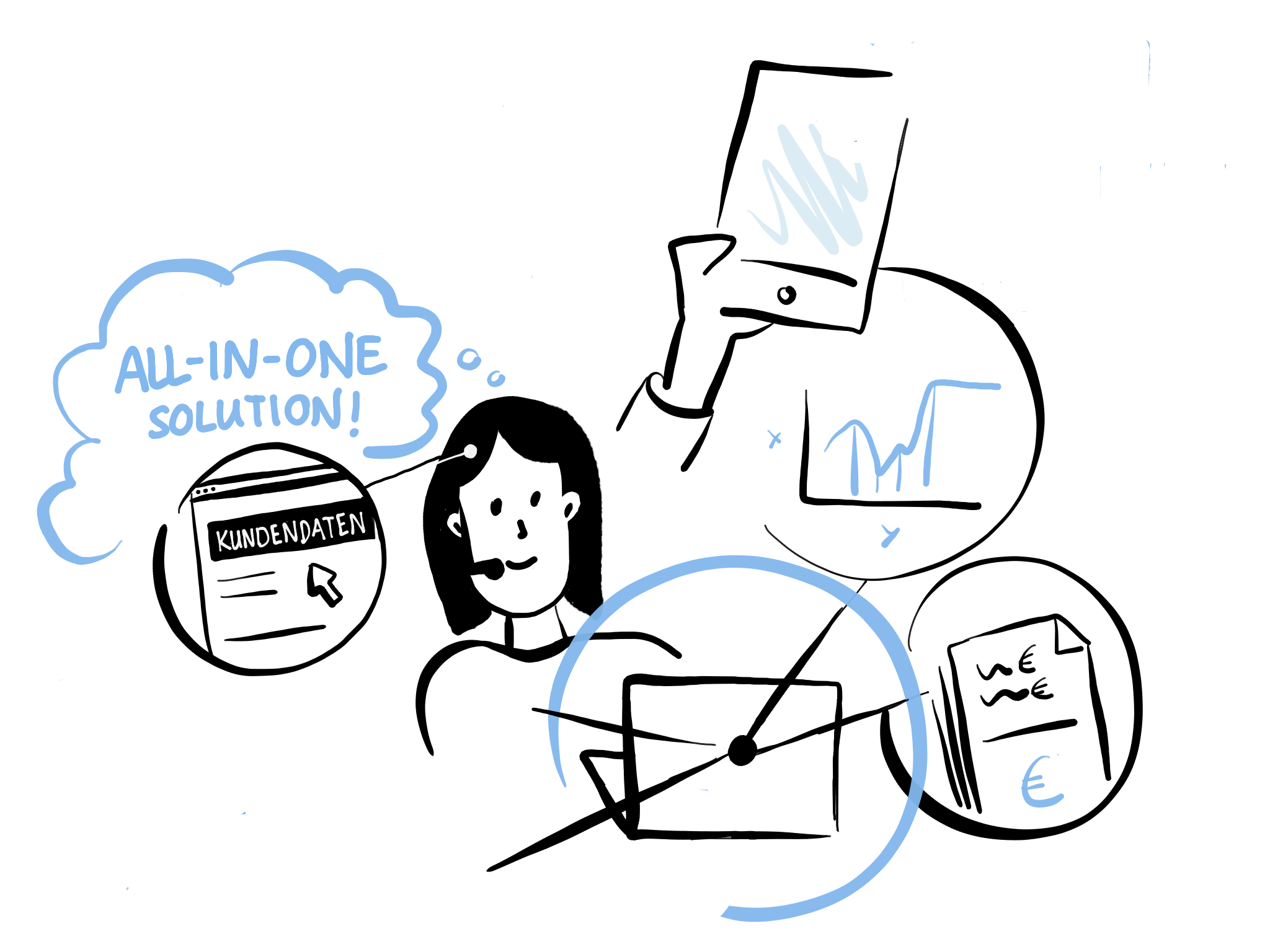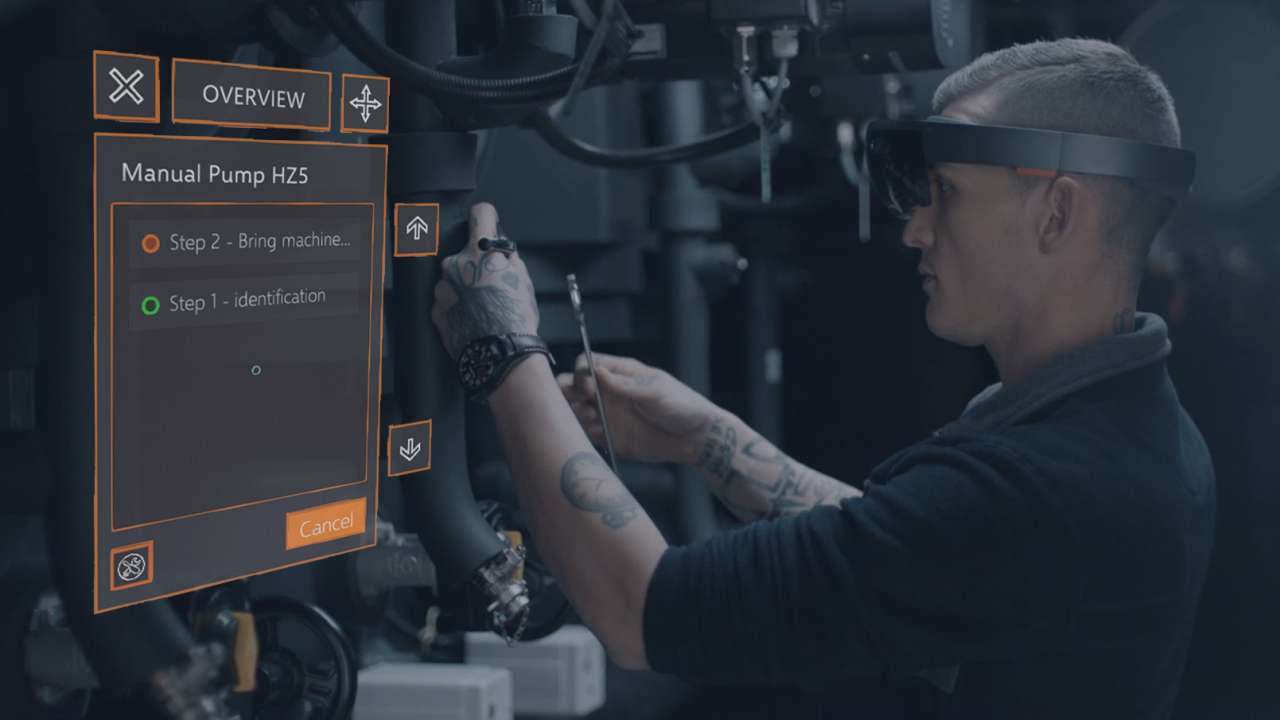
Customer service is increasingly becoming the focus of attention − as a factor that sets companies apart from the competition. If they are able to map their service processes digitally, their customer service will become significantly more efficient and powerful.
Companies benefit from numerous advantages: The speed of processing customer concerns increases. At the same time, companies reduce their costs and relieve the burden on service staff. Thanks to the omnichannel approach, companies can be reached on various channels for service requests, which are then centralized and standardized as tickets. Thanks to high availability and smooth processes, customers’ increasing expectations of round-the-clock support are met.
Such service features increase customer satisfaction and offer companies the opportunity to position their service quality as a competitive advantage on the market. The prerequisite for this is the smooth interaction of the IT systems involved in the background. As part of SAP Customer Experience Suite, SAP Service Cloud ensures integration with other SAP solutions and implements integrated service processes.
Requests through different channels
Lack of overview and insight into historical data
Lack of networking between service and (spare parts) sales
Different systems for inquiries, quotations, planning boards and service delivery
Lack of insight into field service activities
Many manual tasks due to lack of digitalization (e.g. time sheets)
Information deficit due to missing files, slips of paper and protocols
Lack of insight into historical data (tickets, machine data)
Lack of access to customer data and sales-related information (contracts, quotes)
Lack of skills and documents to provide service in the best possible way

Low service efficiency due to lack of automation
Lack of access to resource locations and performance
Difficult to train new employees due to different software modules, media disruptions and head monopolies
Poor service quality, resulting in declining revenue
Low troubleshooting rates, need for multiple service calls

Transparent processes from inquiry to invoicing
High efficiency through automation, e.g. with ticket classification by technician assignment
Reduction of service costs
Higher customer loyalty
Service as a revenue factor rather than a cost factor
Transformation of the company into a solution provider and service-oriented offerings
Service as a competitive driver
Improved efficiency in the service department through optimized billing process and improved metrics
Service requests can be leveraged for more cross- and upselling
Customers can get in touch via the channel of their choice
Provision of self-services
Automatic suggestions for finding solutions
Identifying customers and products with automatic routing to the right employee
Connecting customers to the appropriate service representative
Flexible integration with existing telephone systems (CTI)
Uniform interface throughout the entire process
Access to customer profiles and service history for personalized service and fast problem resolution
Increased revenues through up-selling and cross-selling
Creation of service tickets for simple and complex request
Flexibility through ticket types, categorization, status, approvals, escalations and workflows
Efficiency boost through machine learning
Integrated knowledge base with context-based recommendations for fast solution building
Interactions via e-mail, chat, SMS, portals or social media
Ensuring contractual performance through service level agreements and associated milestones
Flexible content delivery for employees and customers
Access to current, accurate, and consistent information across multiple channels
Avoidance of tickets through self-service and faster closing of tickets
Improved onboarding of new employees through fewer head monopolies
Reuse existing content across the organization
Identification of knowledge and quality gaps through integrated reporting
Faster ticket processing times and higher customer satisfaction
Automatic categorization and routing of requests
Extraction of information such as serial numbers from the ticket
Identification of similar tickets and their resolution
Calculation of estimated resolution time
Determination of customer mood in the request
Increased employee satisfaction through reduction of routine activities
Collecting customer feedback at all touchpoints through various channels
Proactively taking action based on feedback rather than waiting until it’s too late
Using data to predict customer behavior and develop plans
Supporting service staff by providing insight into KPIs and metrics
Providing service management with insight into team performance
Breaking down silos through a central platform for sales and service
Insight for service into sales activities, e.g. quotations and appointments
Sales visibility into service data, such as tickets and interactions
Better internal collaboration and increased revenue through integrated customer strategies
Smarter and more personalized customer targeting
Improved cross-selling and up-selling in the service department

Until the end of 2030, SAP Customer Service will still be supported by SAP S/4HANA in compatibility mode. After that, it will no longer be possible to use SAP CS under SAP S/4HANA. This raises the question for companies of a suitable alternative.

With the connection of SAP Customer Experience to the on-premise solutions of SAP CRM, SAP ERP, and SAP S/4HANA you benefit from uni-/bi-directional synchronization of your master data, full integration of transactional scenarios, and integration of field service and support.

Leading companies from various industries rely on SAP Sales Cloud. With this solution, you digitize your sales processes and benefit from a fast, cost-effective implementation.

Many companies are pursuing the goal of setting themselves apart from the competition with first-class services. Mixed Reality (MR) opens up new opportunities for this. CXMENDO.mixed_reality is an innovative type of remote customer service that offers an experience and efficiency similar to the physical presence of experts on site.

No more headaches when planning your service technicians and executing on-site assignments. SAP Field Service Management is a powerful tool for managing all aspects and challenges of your mobile workforce.

With the help of Web2Lead, contact data that a prospect enters in a form on your website is automatically transferred to SAP C4C and created as a new lead. This gives your sales staff the ability to generate opportunities from the leads created.
Simply complete the form and submit it. We look forward to your request and will get back to you as soon as possible.